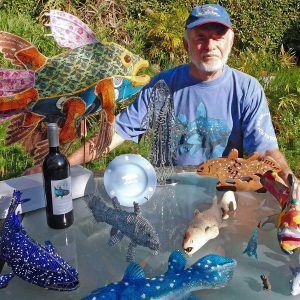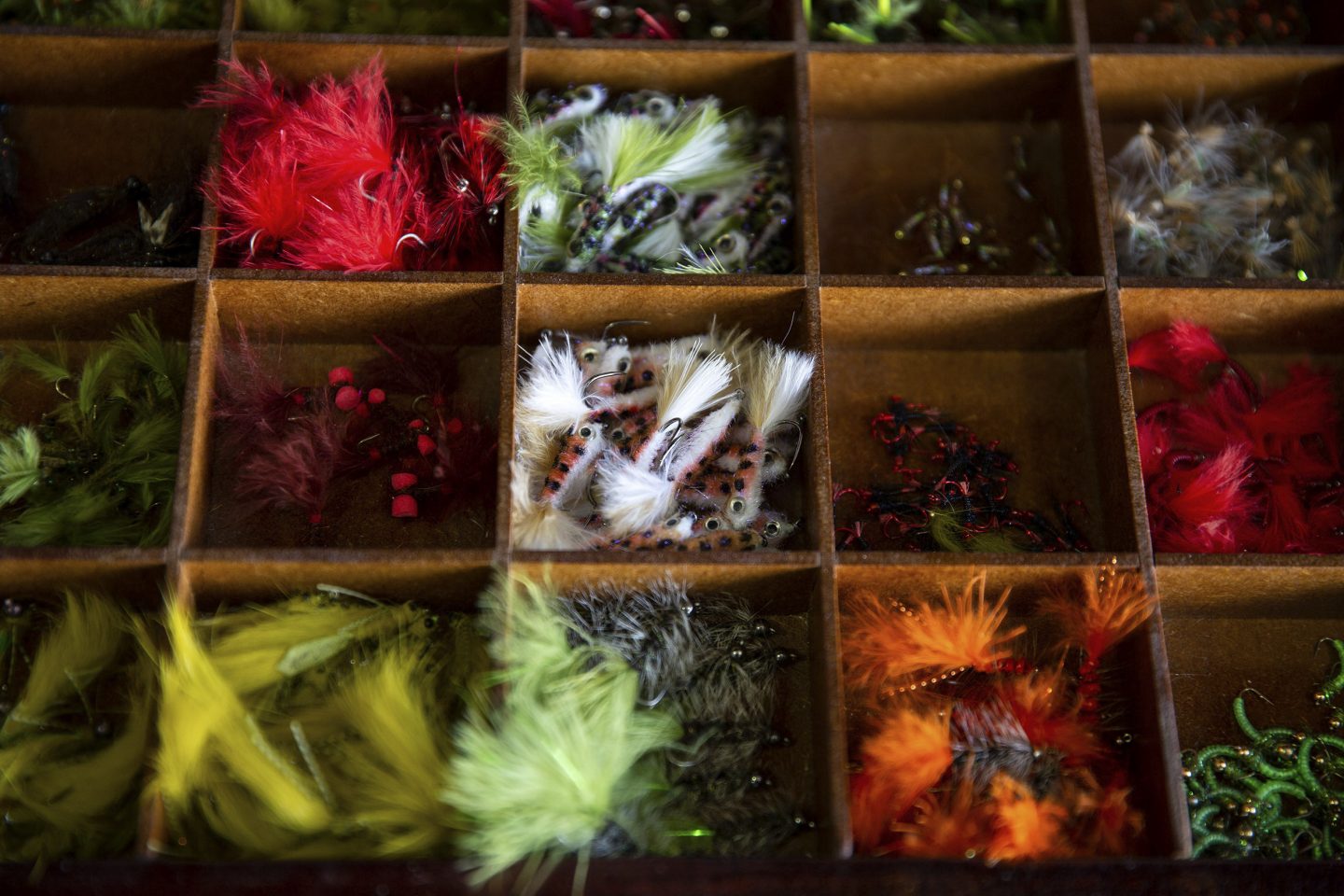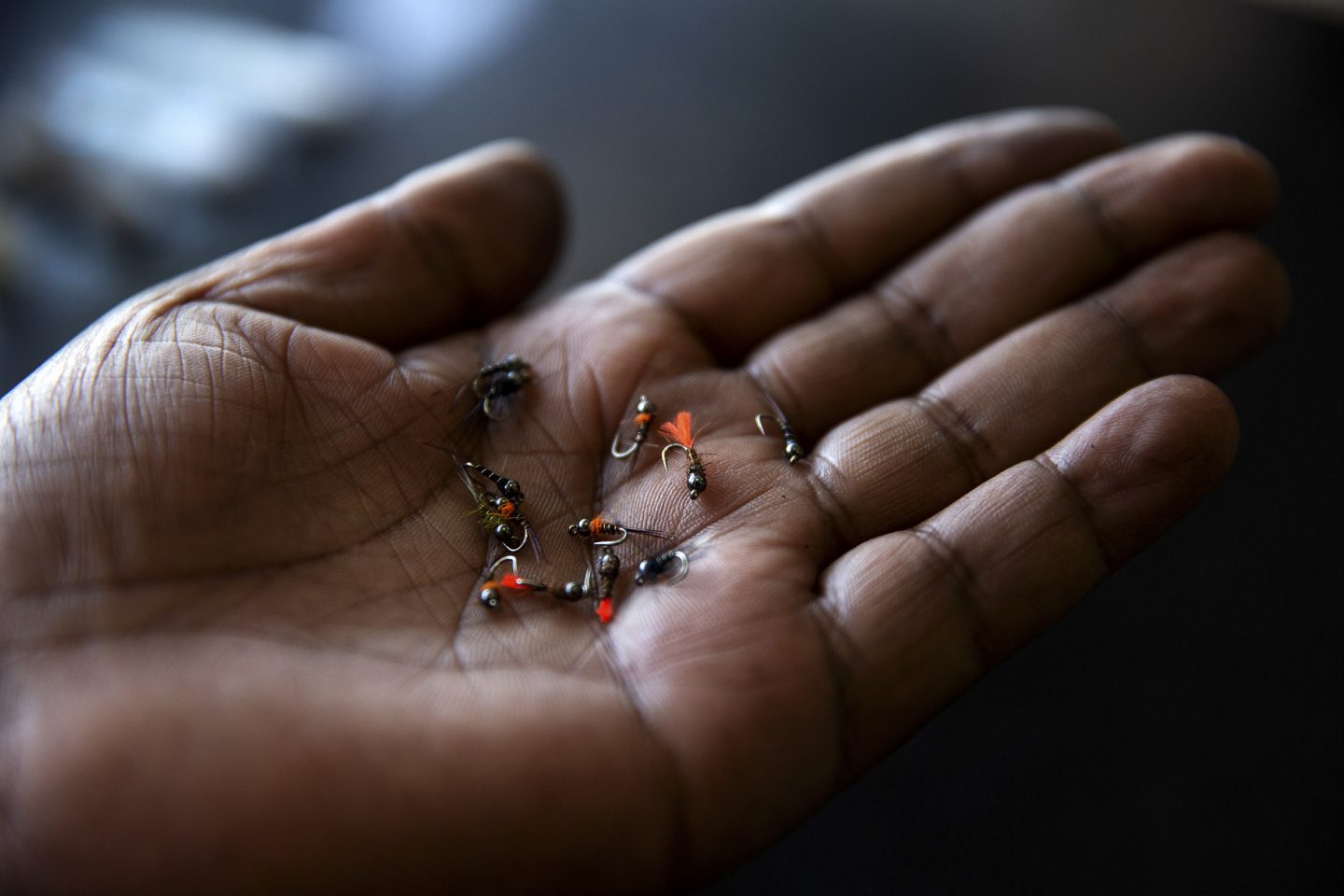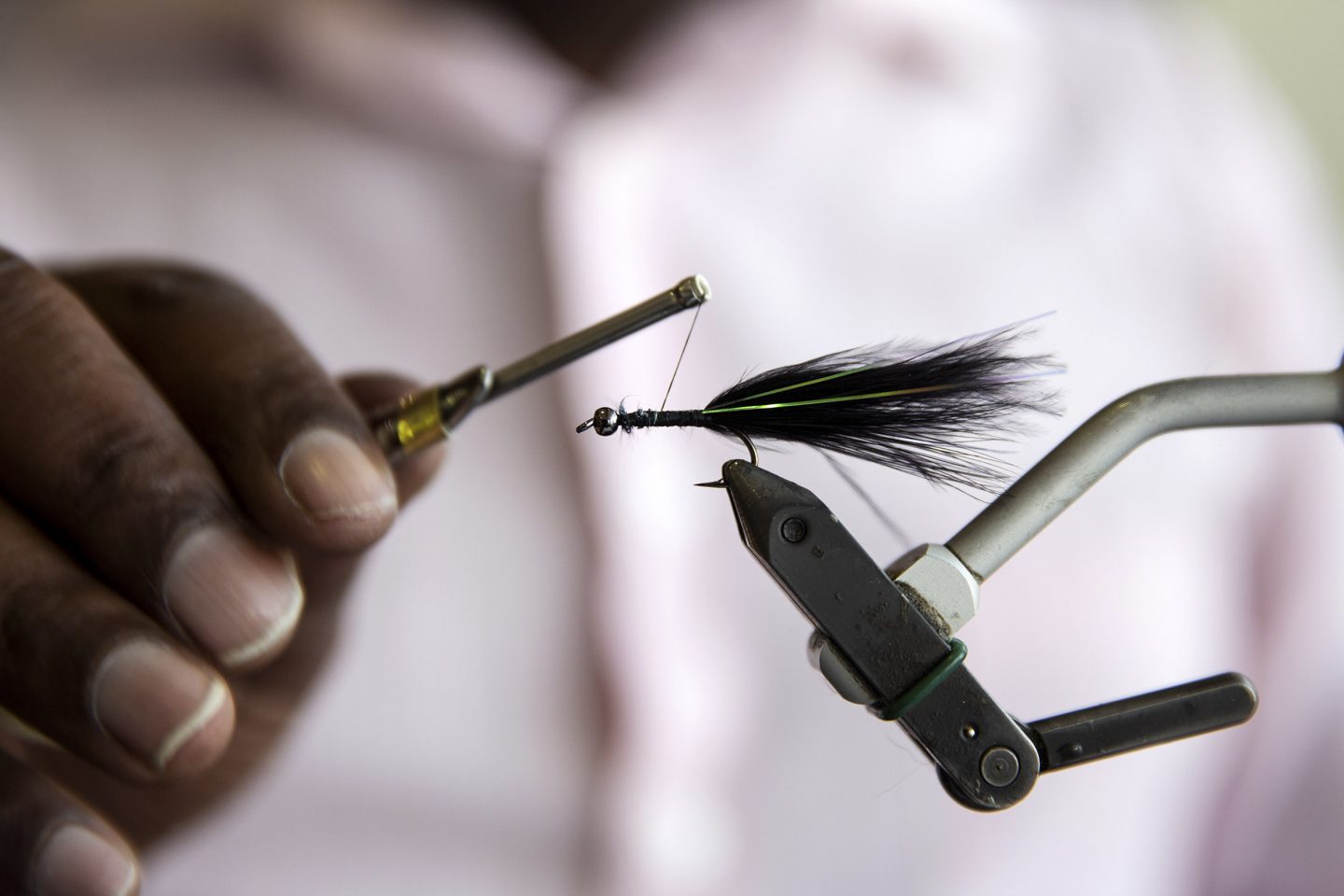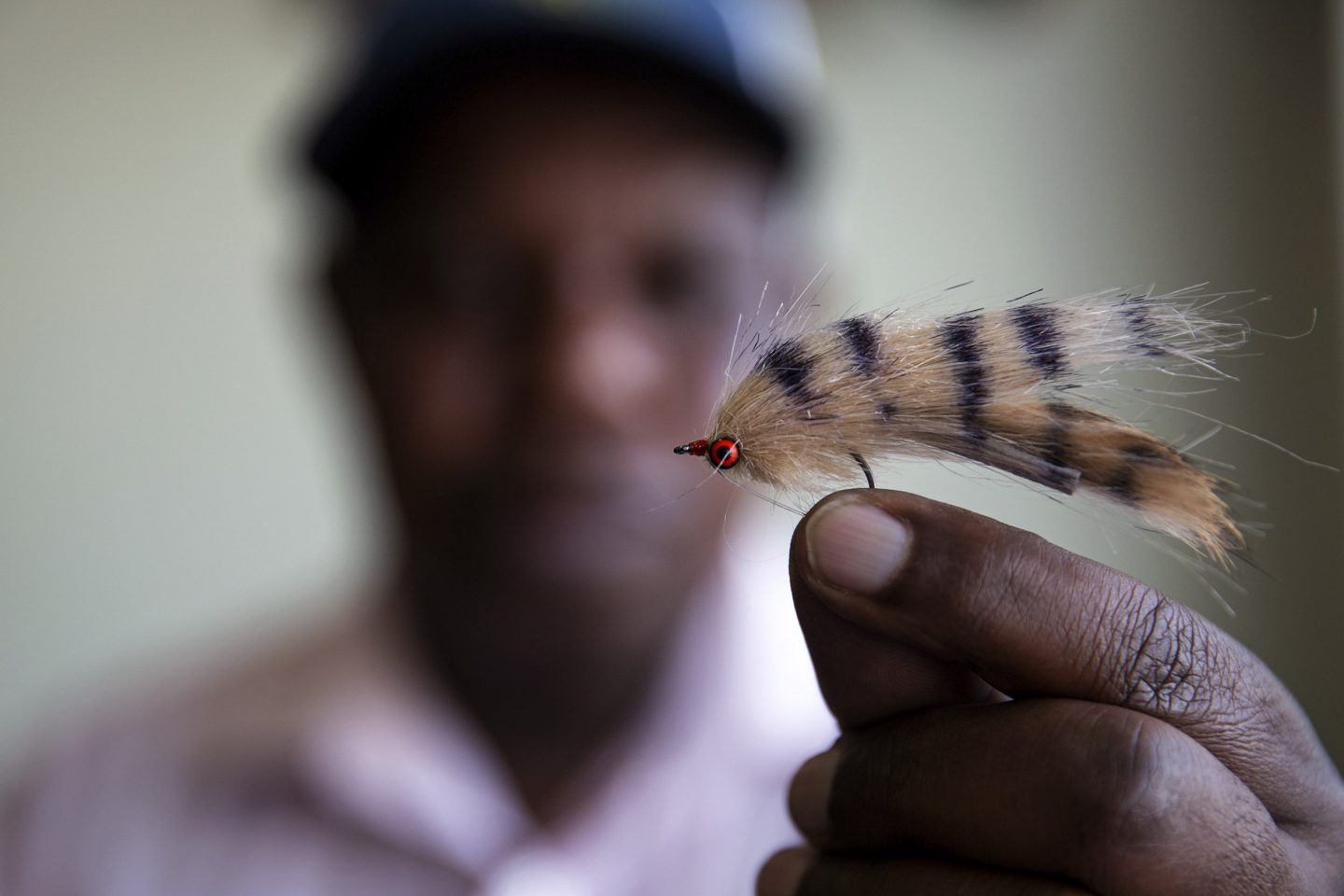Ray Mutemeri, the guy behind the fly
Fly tying is a lesser-known Zimbabwean export, with tiers producing quality fishing flies in South Africa that are used by international anglers to target trophy fish.
Author:
21 September 2020
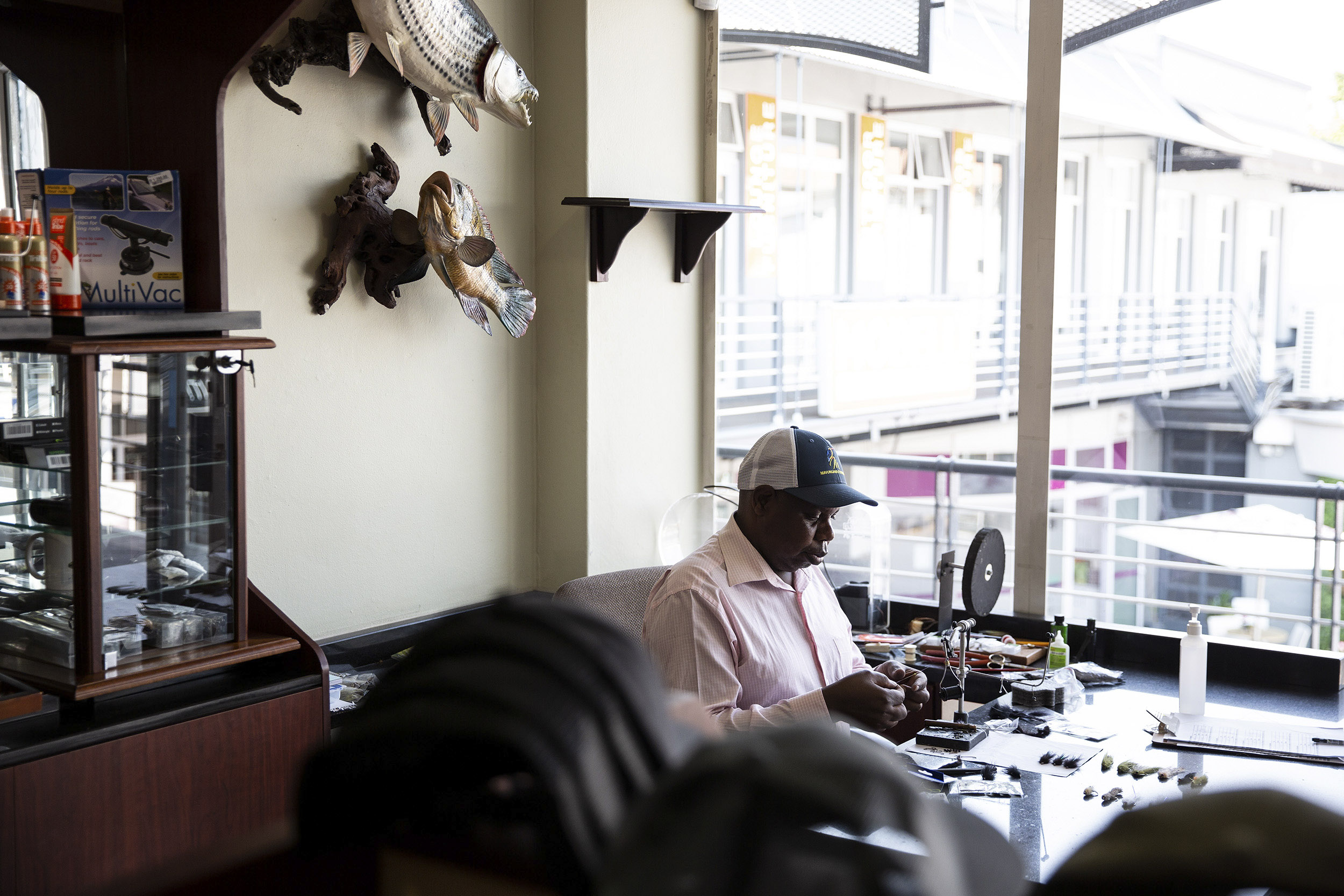
From Jurassic Lake to the Farquhar Atoll, Ray Mutemeri’s magic has helped catch some monster fish. The Zimbabwean has never been to Jurassic Lake in Argentina, nor has he seen the milk-white sands of the Farquhar Atoll off the Seychelles. But it is his fingers that worked the feathers, pinched the buck tail and spun the deer hair into the lifelike baitfish imitations that have fooled many a fish into taking a hook.
The Zimbabwean with the gentle chuckle is a flytier and for more than 30 years his flies have helped fly-fishers catch fish around the globe.
And he is not the only top-notch Zimbabwean flytier in South Africa. Mutemeri’s home country has provided an export of flytiers who learnt their craft at a fly-tying company in Harare in the late 1980s and 1990s. That company was the G&G tying company and it was known, says Mutemeri, for its gruelling apprenticeship.
“It was a difficult industry, because I didn’t understand it,” laughs Mutemeri about his start in 1988. “You have to be artistic.”
Related article:
Mutemeri’s friend Alfred Chiwaya also joined G&G in 1988. He remembers how novice flytiers would begin by tying easy flies. Slowly they would move on to more difficult flies. The most difficult were the salmon flies, made from the feathers of colourful exotic birds that when done right, are so strikingly pretty that some collectors refuse to use them to catch fish.
The salmon flies would be boxed and sent to the United Kingdom, where they would be used in Scottish streams.
Those who made it went on to work in the factory that at one stage, remembers Mutemeri, employed more than 70 tiers.
Supporting family
The deteriorating economic situation in Zimbabwe meant that first Chiwaya then Mutemeri headed south to find employment. Chiwaya became the principal flytier at FlyCastaway tour operators, while Mutemeri found work at Mavungana, a fly shop in Illovo, Johannesburg. The two remain good friends.
Mutemeri’s family are still in Zimbabwe and like so many of his compatriots, he sends food and money home.
“I think if this all didn’t happen we’ll still be at home with our families. But we are here because we can’t just sit and watch our families die,” he says.
Related article:
Other graduates of G&G are now also scattered across South Africa. “Some of them I taught to tie flies, most of them were juniors to me,” says Mutemeri.
Fly tying continues to be a tough industry and the past two decades have seen companies come and go. There have also been a couple of rural upliftment projects, where women were taught to tie flies, but they didn’t work out.

Tying to order
Arno Laubscher blames rising labour costs as one of the reasons for their demise. “It is not an easy thing to do,” says Laubscher, who owns fly-tying company Scientific Flies. “You have to develop skills within people so they can tie the flies you want.”
Besides South Africa, there are a couple of fly-producing factories in Kenya. Their quality is varied, says Laubscher, and a couple of fly-fishers have been burnt in the past when they tried to order flies online. There appear to be a couple of fly scam artists operating in Kenya as fly-fishers paid for flies that never arrived.
But unlike the factory tiers who might have to tie hundreds or even thousands of one type of fly over and over, Mutemeri and Chiwaya tie to order.
A customer will come into the shop wanting flies for an up-and-coming fishing trip. It might be a trip to Russia to fish for salmon, or something more local like a quick weekend getaway to Dullstroom.
There are thousands and thousands of different fly patterns out there and sometimes Mutemeri will be asked to tie one he has never heard of. He might get the client to send a photograph. “Then I can see what material was used to make the fly,” he says. If that doesn’t work, he’ll fire a quick text message to his friend Chiwaya.
“Alfred ties more salt-water flies than me. So I will ask, do you know this crab [pattern] and he will give me a list of materials to tie it with,” says Mutemeri. “Then he will say do this, and do this.”
Tying teacher
Then there are times when someone will wander over to Mutemeri’s cluttered desk at the Mavungana fly shop and ask him to teach them how to tie flies. It is something that doesn’t happen as often as it used to. He blames technology.
“When I came here in 2011, a lot of people would come and ask me to teach them to tie flies. A lot of flytiers have passed through my hands,” says Mutemeri. “But now, because of YouTube, most people tend to teach themselves.”
After three decades of crafting countless numbers of fishing flies, Mutemeri does admit that age is catching up with him. His eyes struggle a bit with the really small flies, but then again the smallest of these are about the length of a mosquito. His fingers feel too big these days, he says.
Now, he prefers tying bigger flies, the ones fly-fishers like to use on their once-in-a-lifetime trips to the Farquhar Atoll.
Related article:
Over the past couple of months, the Covid-19 lockdown has meant that Mutemeri has had to do most of his fly tying at home. But this is changing. As the provincial borders opened under level two of the lockdown, fly-fishers have begun planning trips again.
Mutemeri’s fingers are once again working with the seasons. In a month or two, it will be the yellow fish season. He has an order to fill for yellow fish dry flies for the Sterkfontein Dam.
Dry flies sit on the surface and mimic half-drowned insects. It is a purer form of fly-fishing some say, that requires more skill and more effort to fool the fish. And yellow fish have a reputation of being picky. Often they will come up to look at the fly, circle it and if something isn’t right, dart back to the safety of the depths.
But Mutemeri’s fingers will make sure the fly does look right, and it will do what all of his flies have done in the past: fool fish.

